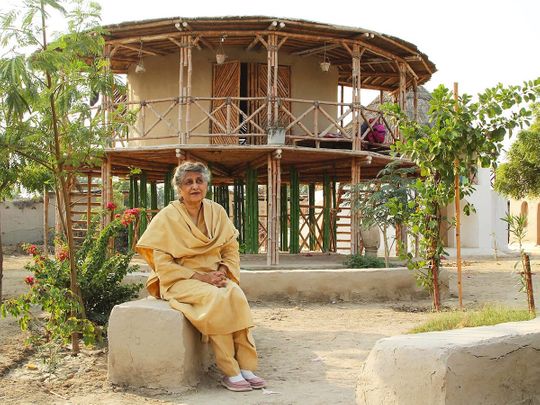In flood-prone Pakistan, villagers are trading tents and tarpaulins provided by aid agencies for natural materials such as lime, mud and bamboo to build their own low-cost and water-resistant homes.
 Designed by Yasmeen Lari – Pakistan’s first certified female architect – about 1,000 such houses have been built.
Designed by Yasmeen Lari – Pakistan’s first certified female architect – about 1,000 such houses have been built.
Traditional mud huts are vulnerable to extreme weather and building concrete homes is expensive and high in carbon emissions, but Lari’s houses are devised to be disaster-resilient, environmentally friendly, and quicker and easier to erect.
Lari used to design modern, glitzy buildings made from concrete, glass and steel, but turned to sustainable relief architecture in 2005 after an earthquake devastated much of Kashmir. She said her NGO (Heritage Foundation of Pakistan) has helped survivors of natural disasters in Pakistan to build about 55,000 homes. Her aim is to ultimately provide homes for at least 350,000 households.
At first glance, the homes designed by Lari resemble traditional village architecture, but their seemingly simple exteriors mask innovative designs. The prefabricated bamboo structures – which sit on raised platforms – have lime-hardened mud walls that keep out water, while the roofs consist of bamboo covered with straw matting, a layer of tarpaulin, and pozzolana, a waterproofing material. Except for bamboo, which needs to be bought from the nearest town or city, the straw, earth and grass for matting are procured from around villages and freely available.
Lime absorbs carbon dioxide from air and bamboo sequesters carbon as it grows, making the homes good for the environment. The houses take a week to build, compared to about three weeks for mud huts and up to two months for permanent cement homes. They can be built for under $87 US, which is less than a tenth of the cost of cement structures.
You can read the original article at www.rprealtyplus.com
